One day we immerse ourselves in the life and tradition of the Sami, the natives of Northern Europe, beyond the Northern Polar Circle. Zum deutschen Blog.
.This blog post contains unpaid advertisement. This trip was paid by myself and all I have written is my personal opinion. You´ll find affiliate links. If you buy a product through this link, you´ll not pay more, but I’ll get a small commission, that helps to go on with my blog.
In Sami country
The Sami are traditionally nomads who roam the country with their wild reindeer herds. They live in Norway, Sweden, Finland and Russia. Today we visit Eva and Anna in Jokkmokk, which is located at the Arctic Circle in Swedish Lapland.
It is the deepest winter here, in early January. Now you think for sure, it’s dark for 24 hours! No, we are not that far north as that. With an hours-long twilight and a spectacular sunrise, the day starts around 8 a.m., but at 3 p.m. it is already pitch-dark again.
Driving to Jokkmokk
We got to drive for 2 hours from Arvidsjaur, where we stay at the Hotel Laponia, to Jokkmokk. The roads are well cleared, there is hardly anyone but us on the road and the tires got spikes.
We drive through the snow-covered forests, over rivers that are still flowing and along frozen lakes. The sun turns blood red on the horizon before it rises over the mountains at around 10 a.m.
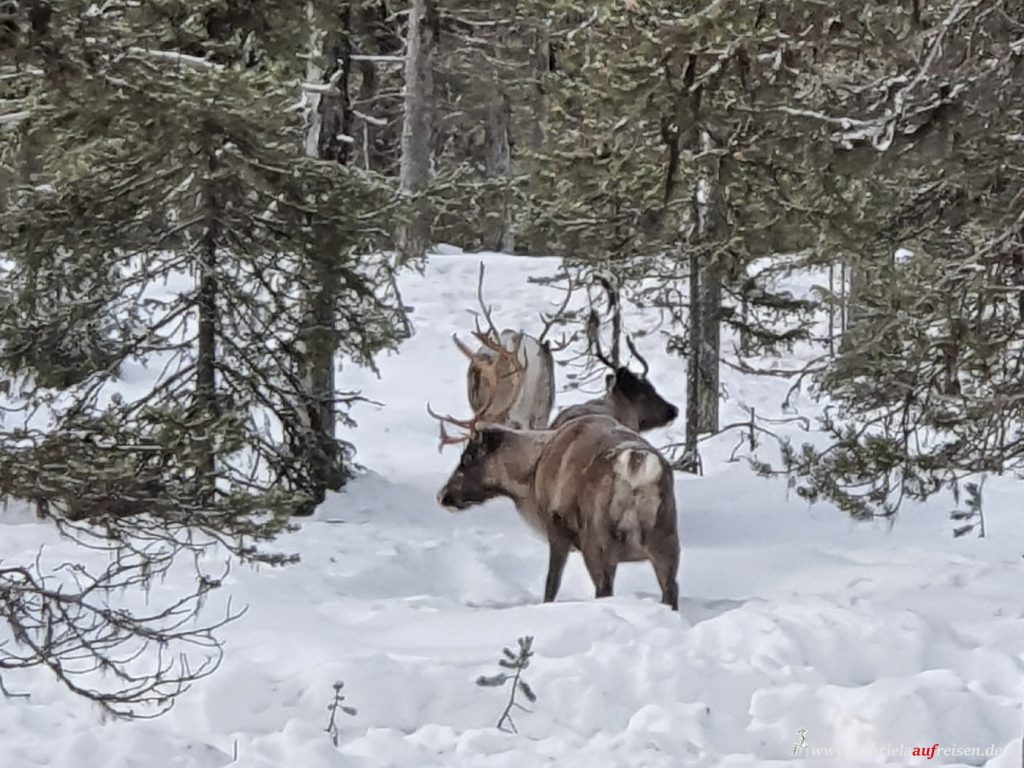
I drive carefully, not as fast as the locals, because black plastic bags keep hanging on the snow posts, which are stuck next to the road in the piled-up snow walls. That means, reindeer can be on the road at any time. And indeed, that’s where they’re running! Not a big herd, but a few are crossing the road. I stop and rejoice at the sight, because they are not shy. They are used to cars and do not disappear in the forest. This excursion starts well!
All reindeer in Sweden have an owner. They are, of course, marked. Some carry bells, like the cows in the Alps, but all are marked at the ears with certain incisions. They move completely free in the forests and so of course the individual herds mix.
Eva Gunnare
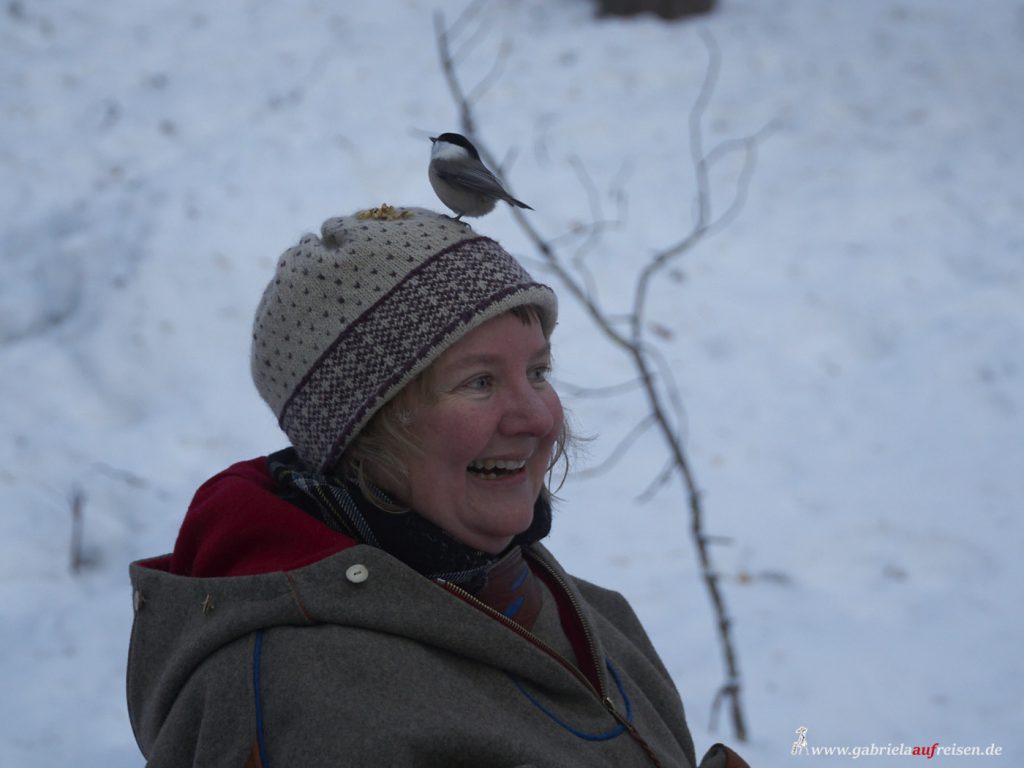
Then we arrive at the small, typical red wooden house of Eva Gunnare in Jokkmokk. This is the home base of “Essense of Lapland”. She is not a Sami but was visiting here from Stockholm many years ago and stayed. Then she dedicated herself to the herbs, plants and cuisine of this region and the Sami. Her house was built in the 50´s of the last century. It was initially a house for a Sami reindeer herder family, with outhouses and a smoke hut. Before, in the 17th and 18th century, there have been small huts for the Sami who came to Jokkmokk for church and needed a place to stay. There was also a church in the immediate vicinity, which no longer stands there, but was moved. As a result, many of these typical cottages collapsed and this district fell into disrepute. In the meantime, all the houses have been rebuilt again.
Into the woods
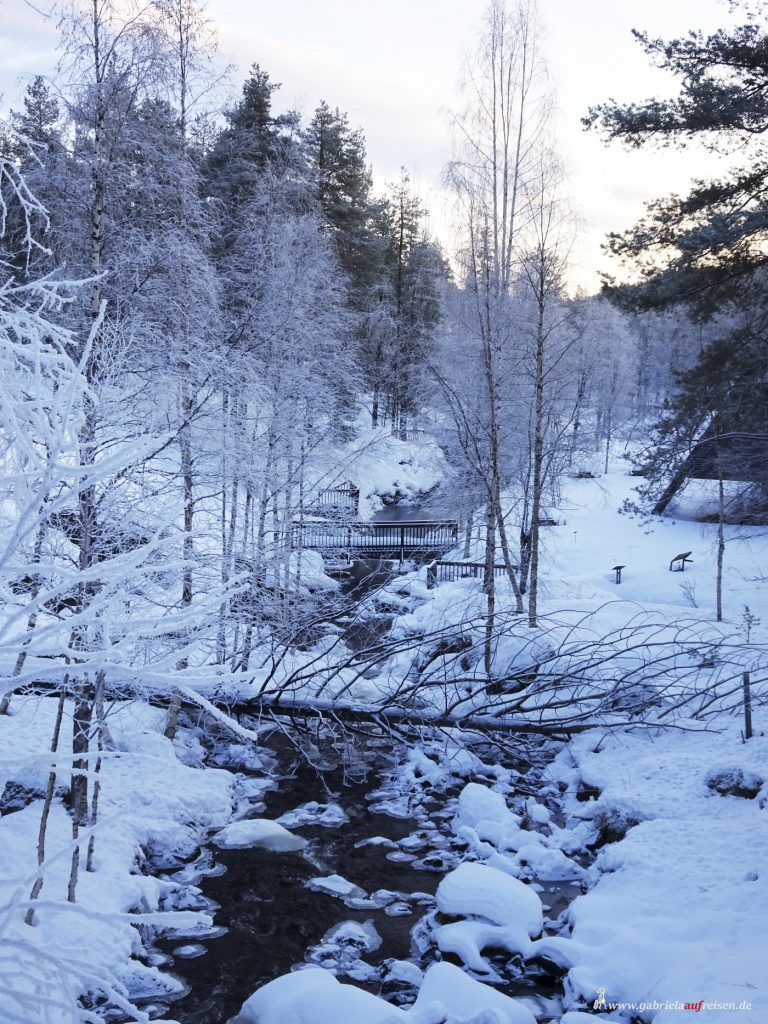
After a very warm welcome and a song bring us into good mood, Eva Gunnare takes a wooden basket with many mysterious bowls and leads us into the snowy forest. I feel a bit like in the fairy tale of Hansel and Gretel, because a wonderful silence surrounds us quickly, no engine noise can be heard anymore. Now I can hear the pines rushing in the wind, the snow crunching under our shoes and a few birds beeping. Eva explains to us how to make bark bread from the bark of pines that grow much slimmer here than the trees we know from our forests. They use the inner bark from pines. The outer bark can be quite thick, but traditionally it was harvested from younger trees with thinner outer bark as well so it was easier to clean it off the inner bark. In one of her mysterious cans, she even has some of this bread for us to try. In appearance, consistency and taste, it is very similar to crispbread. I think it´s very tasty!
On certain bushes and plants, some branches tentatively protruding from the snow, we stop, and Eva explains to us how to use these plants. Incredible, what you can eat and how much knowledge of it has been lost!
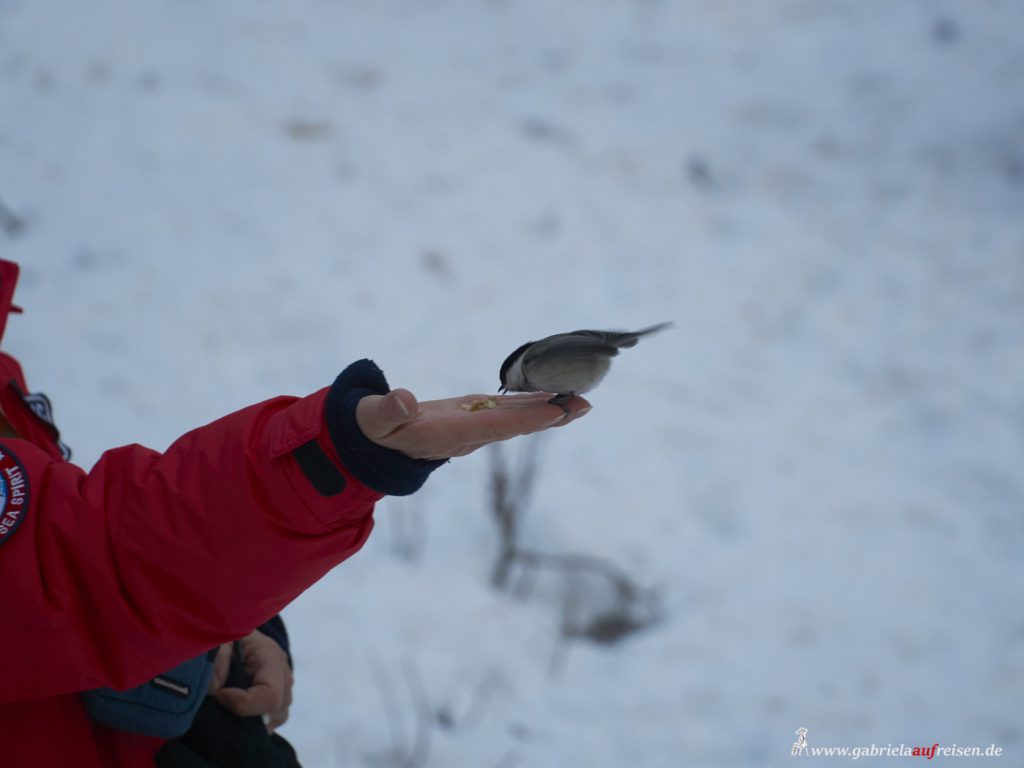
Eva leads us to a place where birds have been fed by school children for many years. They know that people don’t harm them here, and they don’t fly away. Already Eva opens the next can and puts some nut kernels on my hand. It doesn’t take long and the first bird lands briefly on my hand and takes a nut. That is so cute! They even land on our heads! To say goodbye to this spot of earth, where time seems to have stopped, Eve sings again for us. How beautiful that sounds in this winter world!
Then Eva opens one of her thermos cans and lets us taste a warm herbal and berry juice. That’s good, it flows warm into my stomach and my hands are getting warm again.
On the way back, passing other plants that can be uses as medicines, we get some Labrador tea, which is from the needle-looking leaves from Labrador tea plants. That is a plant of the genus of Rhododendron and the leaves look a bit like pine needles. It warms immensely. Pine needles boiled have been used by Sami as a warming drink for ages. It warms much more than any tea that we know.
Evas´herbal chamber
Then we finally arrive at her wooden house again and now she leads us into her living room. She has already prepared various local delicacies. Before we can taste them, however, she leads us into her “herbal chamber”, a room full of tin cans, several freezers, vials, glasses and books.
Here we get more information about the plants that were traditionally eaten by the Sami or used as medicinal plants. We can sniff on dried leaves, taste birch juice as a sorbet, taste dried berries and, above all, marvel at the things and ask questions.
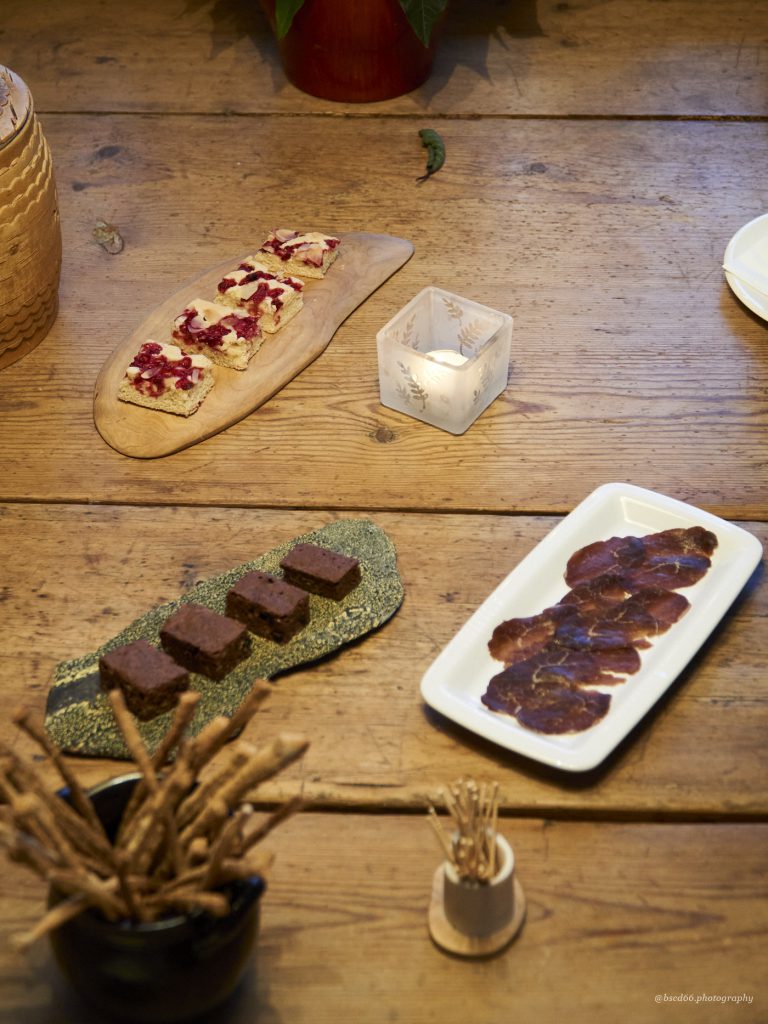
Then it goes back into the living room. We sniff out different, self-mixed teas and choose one to drink. Now we can taste the delicacies, such as reindeer carpaccio or berry cake.
Anna Kuhmunen
There is a knock on the door and Anna Kuhmunen steps in. The Sami woman wears her traditional clothes, a thick felted cape and a hat, made of reindeer fur. Anna picks us up so that we can now immerse ourselves deeper in the Sami culture.
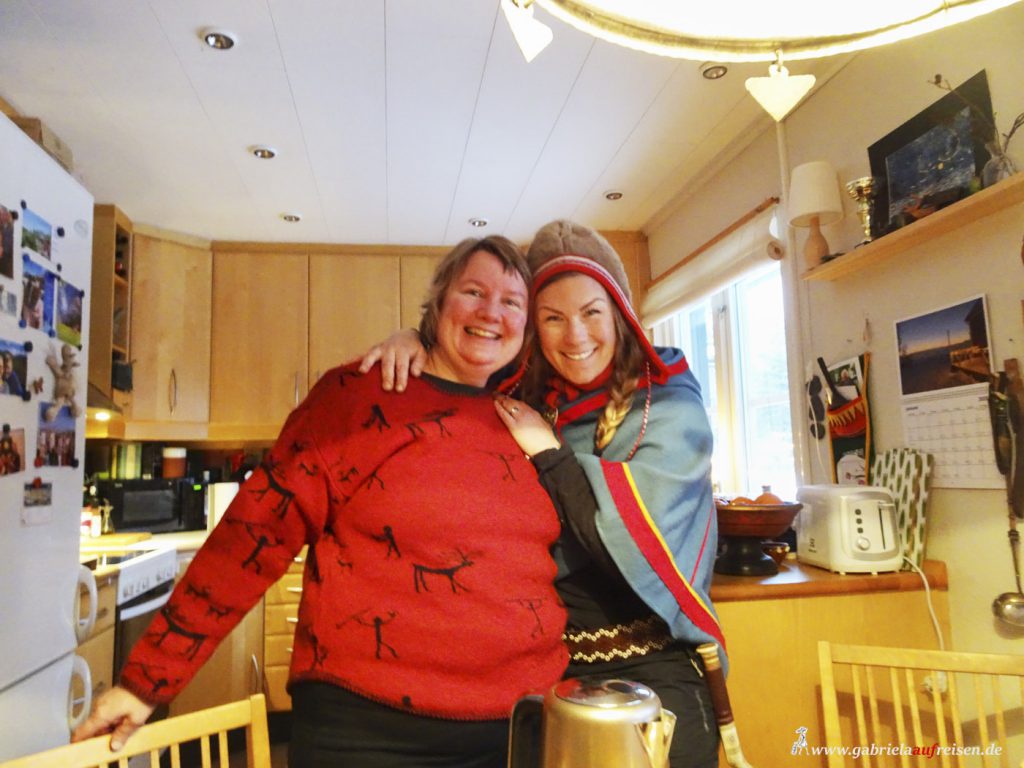
I would have liked to listen to Eva even further, because she has an almost inexhaustible knowledge of the traditional dishes of the Sami. Those who have more time can attend one of their cooking classes.
But my husband Dirk and I are very excited about what Anna has to tell us. She drives ahead and quickly we are outside of Jokkmokk. We stop briefly at the Arctic Circle and then we continue for some more minutes.
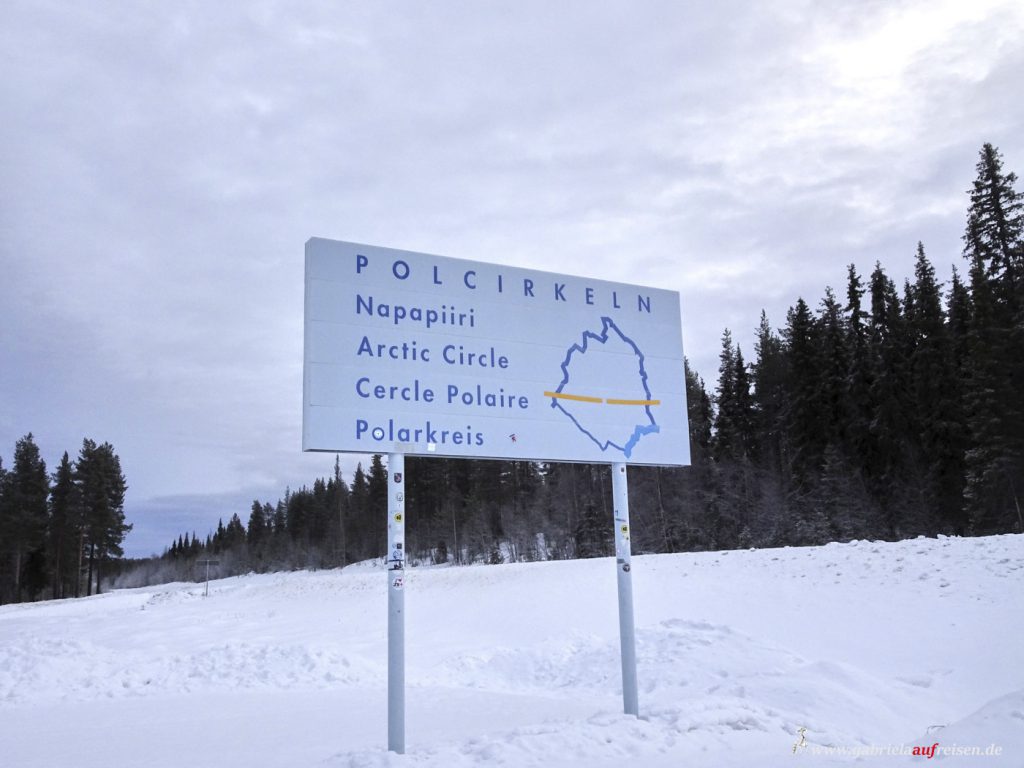
We turn from the main road into a small forest path, which brings us in the middle of the forest and to the home base of “Silba Siida” . Some of the little Sami wooden houses and also some tepees are situated here, the traditional tents where the Sami live during their migrations.
Anna wants to introduce us to the endangered culture of the Sami, especially of course, how the Sami have been living with and from the reindeer for 10,000 years and how their way of life is entirely determined by the reindeer.
Reindeer
I already see some of the reindeer standing in a large fenced area, something that these animals are not used to. Anna tells us that her family only have sick or weak animals staying with them. Otherwise, they move around at the forest. Reindeer have very sensitive noses and can smell their food, mosses and lichens, up to 70 cm under the snow cover and scratch for it with their hooves. Unfortunately, due to global warming, it is no longer so cold, i.e. it even rains sometimes in winter. The water seeps through the snow and then forms an icy crust above the ground. So, the reindeer cannot smell their food due to the ice, as they are perfectly adapted to loose snow and not to hard ice.
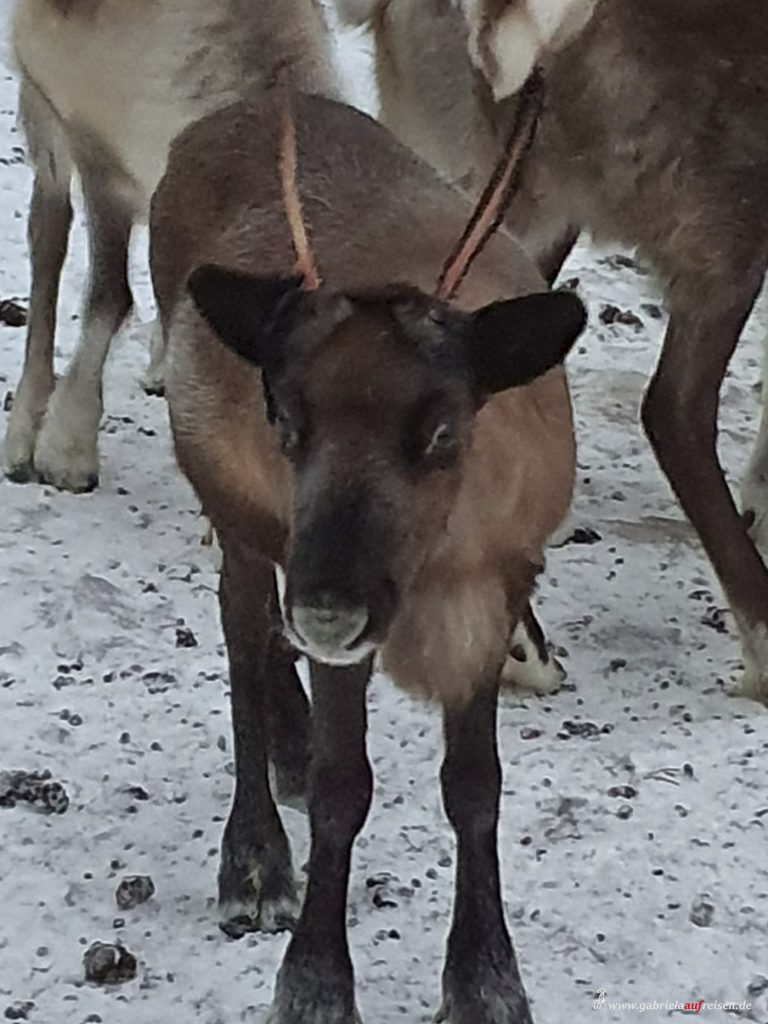
It happens more and more that the reindeer no longer find enough food and therefore must be fed. However, since the animals move freely in the forests, it is difficult to find them. Her husband is on his way to drive the herds together. With the other men of the village, they sometimes spend weeks on the road to search for the animals. Three years ago, almost a quarter of the animals died of malnutrition.
This is, of course, a terrible loss for the Sami, whose existence depends on the flocks, and even worse for the poor animals.
The reindeer, which stay here in the spacious enclosure, are now fed by us. They are not all malnourished, but are recovering from one or the other injury. They are trusting and eat out of our hands immediately. But Anna tells us that they would never stay with people. As soon as the door opens, they would be up and about, back in the woods. You can tame them to the point that they pull sledges, but that’s a lot of work.
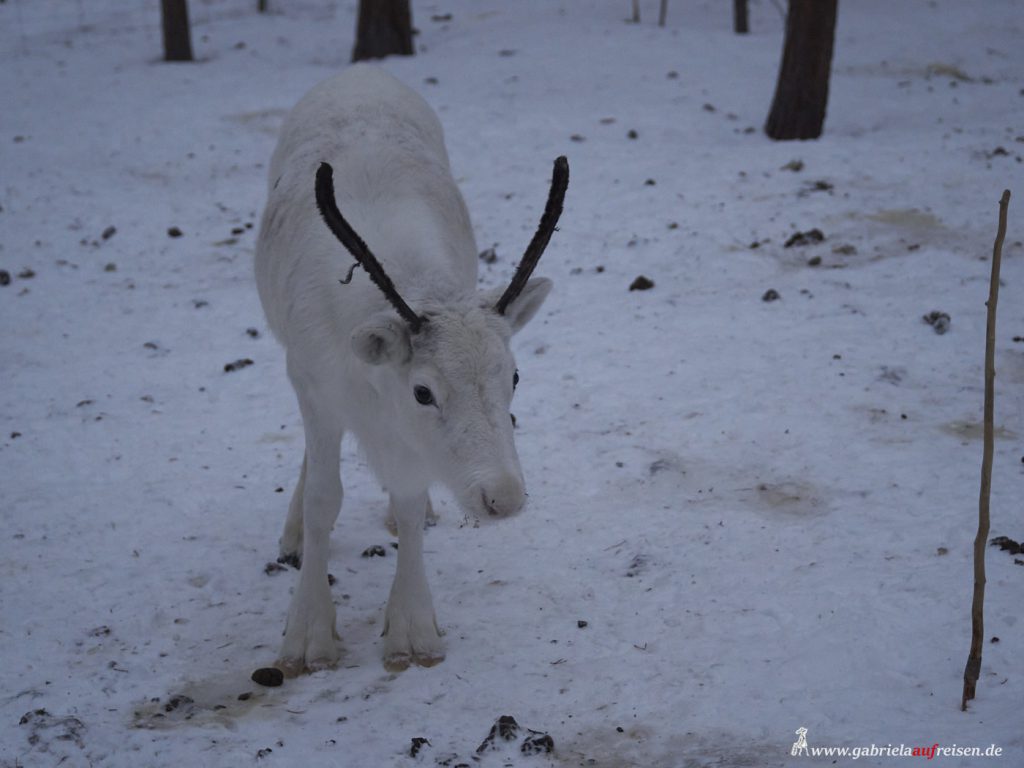
In this flock are also some almost white animals with soft fur. I ask if they have been specially bred. Anna denies that, all colors are a whim of nature.
Since I hold the coveted moss in my hand, I am quickly surrounded by them. I get punched from the front and back, but always cautious. The female animals also carry antlers, which are less branched.
Also, among each other, the animals wrestle sometimes, everyone wants to be the first at the feeding place. Anna, meanwhile, has also scattered pellets. Reindeer do not drink water in winter, they quench their thirst only by eating fresh snow. Therefore, the animals cannot be kept in large numbers in the enclosures, the snow gets dirty too fast.
Slowly it gets dark and I have to tear myself away from these cuddly and lovely animals, which behave so very differently from the deer we know from our country.
Inside the tepee
Anna leads us into her teepee, which she uses as accommodation during summer, together with her husband and two children, while they migrate with the reindeer.
The tepee looks like a typical Indian tent, as we know it from the movies. Inside, a proper fire is already burning and it is so warm that we can take off the jackets and boots. The floor is laid out with animal skins, which keep us warm from below.
Also, Anna hands us a warm berrydrink, the cups are carved from wood. Nobody needs plastic here. From the slaughtered reindeer every bit will be used, nothing is thrown away, as we now learn.
Since no cereals can be grown here in the far north of Europe, the indigenous population is largely dependent on the reindeer.
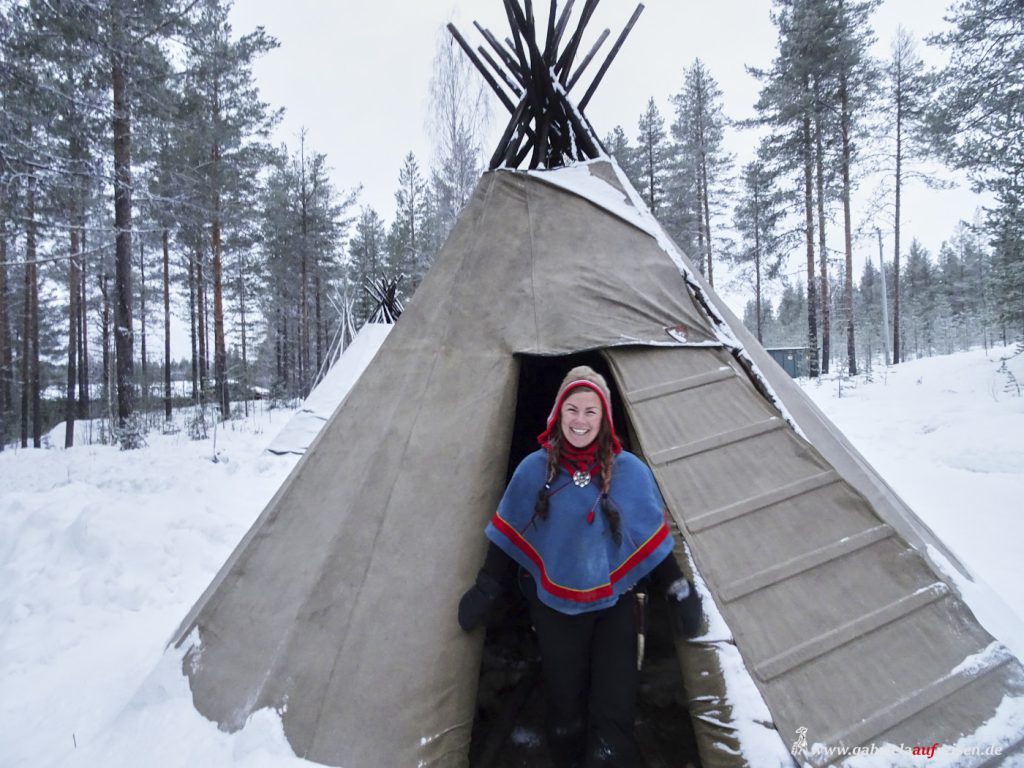
Anna and many of the other Swedish Sami, who are about 30,000 remaining, are afraid for their future. Iron ore has been found in the Sami Nomads’ migrating area, which is now to be mined. This would deprive the Sami of their livelihood. Since this land is not owned by the Sami,they use it as pasture land,this is a big problem. The Sami do not know land as property as we know it.
Personally, I very much hope that the Swedish Government will not decide to release this country to mine iron ore. This would destroy the sami’s unique and millennia-old culture.
Anna has not only prepared the delicious juice for us, but a very special bread, a kind of pide, which cannot break and stays fresh for a relatively long time. So the Sami can eat the reindeer meat in them on their walks. We now try the freshly pan-fried meat. It is quite delicate and melts on the tongue.
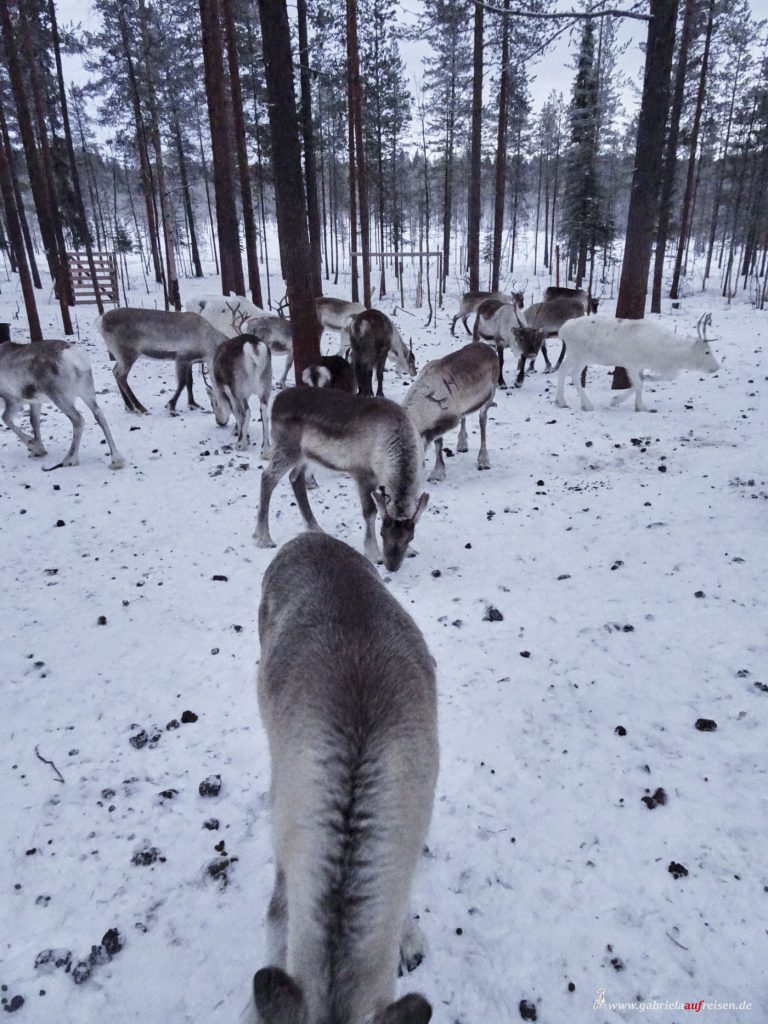
Meanwhile, the already prepared soup simmers over the fire. Of course, it also consists of reindeer meat, which is cooked only with a little salt, potatoes and carrots. Rarely have I eaten such a good soup and I am glad that I can have a second help!
Joik
After we are all saturated, Anna wants to sing for us. She asks us not to record this and rather close our eyes. This kind of singing has been forbidden by the Church after the advent of Christianity in this region and generations of Sami have no longer practiced this “Joik”. With this joik, people sing to animals, people or even natural events. It is a kind of shifting into one another, into the natur or the environment. The shamans have sung themselves into a kind of trance. No wonder the Church forbade this strictly.
It is all the more beautiful that this kind of tradition is now being practiced again. Anna has a beautiful voice that conjures goosebumps on my body.
In the meantime, it is quite dark outside, only the slowly glowing fire illuminates the tepee, together with the singing it gives a quite wonderful atmosphere. Could we stay on!
Unfortunately, our time here with Anna Kuhmunen is over and we are released into the reality of the here and now.
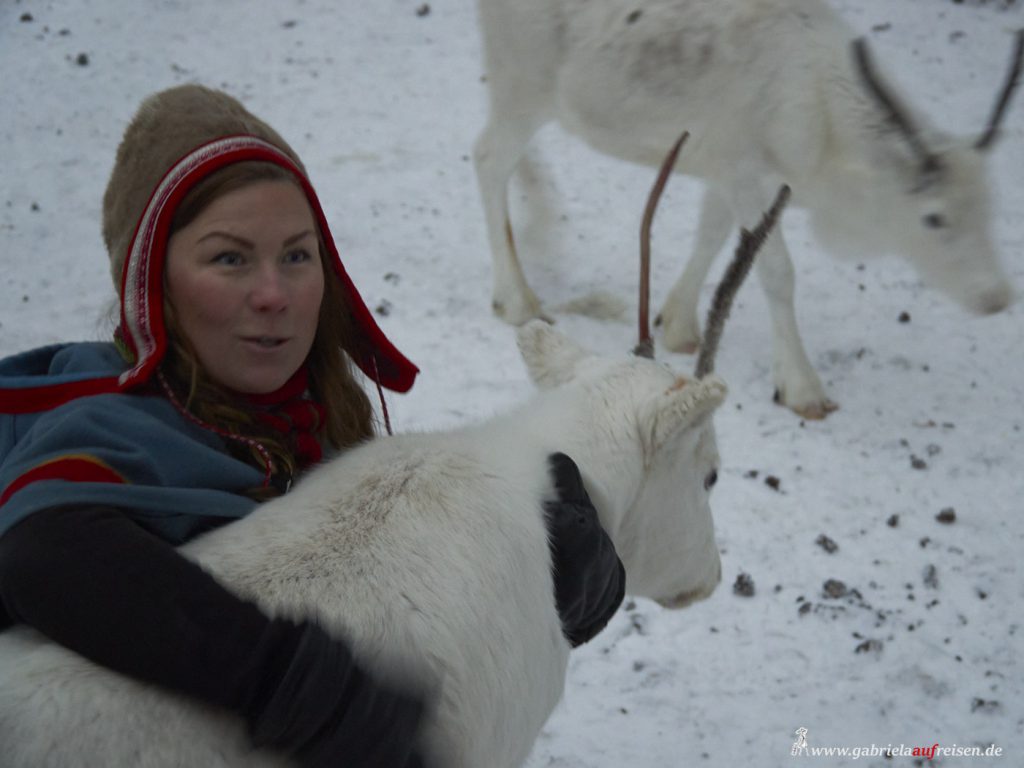
Two hours of driving through the darkness are ahead of us and now it starts to rain slightly. Very bad for the reindeer out there in the woods and also bad for us, because the streets get glassy.
Would you like to know more about my time in Swedish Lapland? Then quickly subscribe to my newsletter. News and more pictures can be found on Facebook, Instagram, Pinterest and TripAdvisor. I am happy to get some comments here or there and your “like”. See you next time!
My special thanks go to Johann Schatton from FlyCar, who gave us the hint to visit these two women!
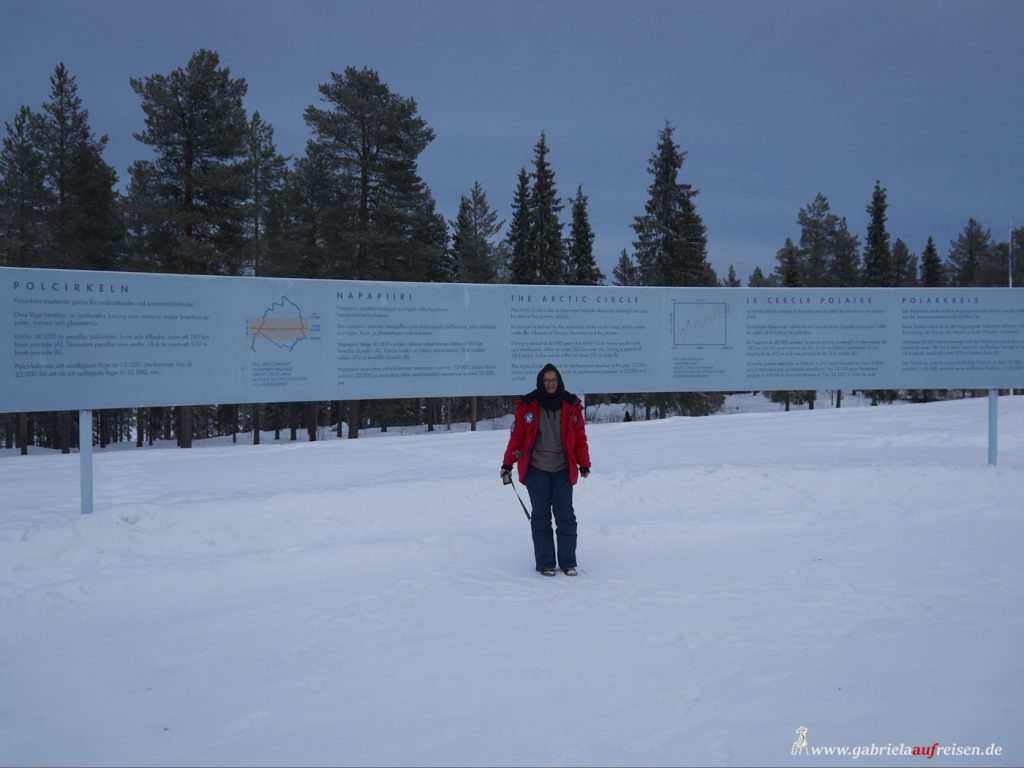
[…] The next day, on New Year’s Eve, Johann picks us up and drives with us the approx. 50 km to the next village, Mala. This small place is so to speak the entrance to the area of the Sami, about which I have already written. […]
[…] Einen Tag tauchen wir ein in das Leben und die Tradition der Sami (Samen), den Ureinwohnern in Nordeuropa, jenseits des Nordpolarkreises. (To the English blog) […]